#Auðr
Explore tagged Tumblr posts
Text
"Nòtt's family!"
My depictions of Nòtt and her family, based on this story I wrote about them! I also added in some fun info about how I see them. I haven't seen any content about them, not on ao3 or fan art, so as always I'll be the one to bring that attention to their characters. As always I look into the sources and use what I find :]


#norse mythology#norse pantheon#norse gods#natt#nòtt#dellinger#dellingr#naglfari#naglfar#annar#meili#dagr#dag#jord#jörd#Auðr#Audr#jotunn#jötunn#poly representation#poly ships#polyamarous#polyamory
13 notes
·
View notes
Text
Auðr opinion time.
As an intersex person who fluctuates with my transfem identity, non transfem folk are more than welcome to make transfem flags. We have very little flags already compared to transmasc ones, and I adore seeing all the ones posted. If perisex ofab (Observed female at birth) folk try to say they are transfem, that is another story.
As a therian who identifies with one or two miscverse labels, miscverse is not NSFW. It was a term created by minors, and the predominant community is minors. Claiming terms that have been reclaimed from NSFW origins are in fact NSFW is wrong. Besides, kink at pride is one of the most common things in this community as pride was founded by kink and black transfems.

[Image ID: On the left side is a girl with long, light-brown hair glaring at the viewer. She's got purple eyes and is holding a shark plush in her right arm. Next to her is desaturated purple text reading, "Auðr or Żaneta. They/Them and Xe/Xem." // end ID. ]
3 notes
·
View notes
Text
The sagas are historical, not mythological
By which I mean, yes, "myths are not stories that are untrue; rather they are tales that don't fit neatly into the historical record, which serve as the foundation of a culture". The sagas do fit neatly into the historical record.
• • •
In Eiríks saga rauða, Erik the Red's saga, there's this bit where Auðr djúpúðga, better known to many as Unn the Deep-Minded, has to flee Scotland after her son is killed and his many enemies come looking for her. So she builds a ship in secret, no small undertaking, and escapes.
Later, someone shows up in Greenland and says "I am a descendant of that same Auðr!" and everyone's duly impressed.
Now, when I read this, it was after I had already read Orkneyinga saga, where this is mentioned in passing—Auðr does this in Caithness, the part of Scotland immediately south of Orkney, and so the story is mentioned in passing as an impressive deed.
So having read first an allusion to it in Orkneyinga saga, then the details and some consequences in Eiriks saga rauða, I was impressed with "oh yeah, this fits together because it's real history."
Then, I read Laxdæla saga and it turns out the entire opening part of it concerns Auðr/Unn directly, and the historicity got even thicker.
• • •
When I was in Iceland, I stayed in the part of the country that is Egils saga land. I mentioned how… let's say, impressively violent Egil is to an Icelandic friend over chat, and he immediately replied with a list of ~49 names, the first being an Egilsdóttir, and the last name his. He just happened to have his direct line of descent handy.
#sagas of the Icelanders#the greenland sagas#Orkneyinga saga#mythology#history#Not Ragnarssona þáttr#just because we call it a saga in English that doesn't mean it is a saga
3 notes
·
View notes
Text
Hávamál 78
I saw big herds of cattle
owned by a rich person’s children;
Now they carry a beggar’s staff.
Wealth is like
the twinkling of an eye—
no friend could be more faithless.
Fullar grindr
sá ek fr Fitjungs sonum;
nú bera þeir vánar vǫl.
Svá er auðr
sem augabragð—
hann er valtastr vina.
3 notes
·
View notes
Text
#167
Aar Add Aden Adur Adís Adór Agn Agný Aki Akul Al Ala Aldi Alen All Als Alsý Altý Alvi Alía Alín Am Ama Aman Ami Amí An Ana Anda Anea Aney Anga Ange Ani Anny Ar Aria Arit Ark Arkó Arla Arn Arr Arra Art Arta Arí Arð As Ata Atra Atta Auf Aug Auga Augi Aukk Aur Aus Auðr Aða Aðar Aðey Aði Aður Aðín
Ba Ball Bar Barn Bas Be Beir Bel Beld Ben Benn Ber Bert Berð Bet Beti Bey Bi Bir Bja Bjar Bjas Björ Blá Blár Bló Bor Bord Bori Bra Brek Bren Brey Bri Brir Bry Bryn Brán Bráð Brí Bría Brís Brún Bur Bárs Bær Bí Bóey Bór
Cam Car Cas Ce Cen Cenz Ch Char Cord
Da Dam Dani Dant Dar Dea Den Di Dika Don Dord Drey Dr Dri Drí Drós Drún Dur Durg Dóam Dóme Dóna Dórd Dú Dún Dý Dýr
Eb Eben Ed Eda Eden Edía Edíl Edís Efa Ega Egís Eia Eif Eimr Ein Einn Ek Ekur Ekus El Ela Eld Eley Eli Ell Ells Els Elíf Em Eman Emba Emel Emes Emi Emio Emoa Emur Emín Emír Emýr En Ena Ene Enna Ens Er Erg Eri Erka Erle Ert Erð Erði Es Esel Essi Este Et Etta Ever Evi Evin Evla Evía Eyll Eyvi Eð Eður
Fa Fan Fana Fann Far Femý Fer Ferg Fey Fi Fill Fin Fis Fjor Fla Fle Fló Ford Fra Fram Fras Frea Fren Frey Fri Fria Frie Fris Frit Frob Frá Frí Fría Frín Frít Fríð Fró Frós Frún Fur Fá Fán Fída Fíf Fína Fús
Ga Gam Gann Gar Gaug Ge Geif Geik Gein Geit Gen Ger Gerg Gerk Gern Gers Gert Ges Gey Gi Gir Girr Gjar Gla Glja Glía Gni Go Gorg Got Gr Gra Grea Grey Gría Grín Grún Gul Gum Gun Gund Gunn Gur Gurn Gusa Guth Gutt Gín Gís Gó Gól Góla Gý
Ha Hael Haf Hafn Hald Hall Halm Hals Ham Hann Hant Hany Har Hara Hard Harg Harn Harý Haug He Hea Heif Heir Hel Hela Held Hell Helí Hen Hena Heo Heon Her Herg Hern Hert Hia Hil Hila Hild Hina Hja Hjar Hján Hjör Hli Hlin Hlía Hlöð Hni Hony Hra Hraf Hrah Hran Hre Hren Hrey Hreð Hri Hrin Hrit Hron Hrær Hrós Hua Hug Hul Hull Hulr Hur Hus Huxi Hva Háka Hæna Hía Hían Hól Hóra Hört Höð Hún Húní
Id Il Imir In Ind Ine Ing Ini Inik Ink Inka Inn Inný Intý Ir Irg Irt Iría Is Iður
Ja Jar Jarn Jart Jel Jen Jet Jeta Jon Jord Jug Jul Jur Já Jálm Jóki Jól Jóli Jóma Jónn Jór Jós Jósi Jót Jóðr Jör Jörg Jörn Júf Júfa Júki Júlf Júli Jún Júna
Ka Kael Kann Kapi Kar Kark Karn Karr Karý Kas Kath Kell Ket Key Ki Kir Kita Kja Kjel Kjen Kla Kli Kni Kogi Kola Kold Kon Kora Korg Korr Koði Kra Kras Kri Kria Krif Krik Krit Krus Kröð Krún Kva Kó
La Laug Laur Lav Le Lein Leir Len Ler Let Lex Ley Li Lia Lie Lin Line Lir Lis Lix Liða Lo Lon Lord Lot Lott Loði Lufa Luni Lunn Lur Ly Lá Láka Lía Líel Líet Líla Lís Líus Ló Lói Lóki Lóma Lór Lóð Lúka Lún Lús Lúsa Lúís Lý Lýr
Ma Mael Magn Mal Man Mank Mann Mard Marg Marn Marr Mart Mas Mata Maíl Me Medi Mek Mel Mela Mell Men Merg Mern Mi Mida Mik Mika Miki Mir Mja Mjör Mon Monn Monr Morg Mun Muna Munn Mur Mán Mín Mína Mít Míta Mór Mós Móðr Mý
Na Nan Nany Nar Ne Neig Nes Neta Ney Ni Nik Nika Nir Nirr Njói No Noli Nony Nor Nord Norg Norn Norr Notn Ná Nía Nít Níus Nó Nóna Nórg Nórk Nót Ný
Obín Odd Oddý Odon Odór Okt Okta Ola Olka Oll Ord Org Osca Ot Oth Otka Otke Otra
Pa Para Part Pata Pats Perg Pet Peti Pord Prís Príó Pus Pálf
Ra Rafa Ran Rana Rant Rar Rarn Red Regn Reig Rek Rel Rell Ren Rena Rens Res Ret Reta Rey Ri Rick Ron Roný Rost Runn Rus Rá Rína Ríus Ró Róa Rór Róse Róð Róði Rök Röð Rúr
Sa Sael Safn Sall San Sana Sann Sar Se Sea Seir Sel Sela Sell Sen Sena Ses Si Sid Sig Siga Sigg Sigi Sild Sill Silý Sin Sing Sinn Sir Sirg Six Sjar Sk Ska Skar Ske Skel Skur Skín Skús Skút Sma Smen Snir Sno Snoa Snor Snóa Snór Sný Son Sop Sp Spa Sped St Sta Ste Sten Stey Sti Stia Stil Stin Stir Stja Stla Stra Strí Stur Stól Sum Sun Sund Sunn Sur Sus Sva Sval Svar Sves Svet Svia Syls Synn Sæl Sæll Sæna Sæun Sæva Sí Sín Sív Sólf Sóli Sólk Sóll Sólm Sörn Súa Sý
Ta Tan Tane Tann Te Teir Teus Th Ther Thur Ti Tin Tinn Tir Tjör Tord Torg Tra Trey Trún Tur Tín Tó Tólf Tóli
Ubba Ug Uga Ugi Ugur Ul Uldi Ull Und Unda Unn Unni Unný Ur
Va Vaf Vak Val Vald Vall Vals Vana Vane Vann Vans Vaní Var Vara Vari Varn Vas Vea Veif Vein Veir Verg Verr Vert Vey Vi Vias Vick Vid Vig Vik Vil Vild Vils Vin Vina Vinn Vis Vitz Vold Voní Vop Vord Vára Véke Vía Víg Vígo Víka Vína Víra Vís Víó Vörg
War Werg Wil Wild Winn
Yman Yn Yni Yrk Zak Zaka Zop Zópa
Ágar Ágús Álm Ámur Ár Ára Áran Árek Áren Árey Árn Árnó Ársa Ársi Ásar Ásda
Åkri Ård
Ægit
Íden Ígdí Ímar Ímur Ín Íra Íras Írís Írós Ís Ísa Ísam Ísl Ísle Íus Ív
Ódóa Ófey Ófra Ófur Ól Ós Ót Ótur Óðrá
Ögný Ölla Ölni Önn Ör Örg Örnd Örnó Ört Örta
Úla Úlí Úlía Úlíf Úlín Úlíð Ún Úr Úra
Þak Þen Þina Þjóa Þjói Þjór Þjós Þjót Þjóð Þok Þor Þord Þorg Þork Þris Þrós Þrún Þur Þyr Þyra Þyrg Þórg Þórð
1 note
·
View note
Text
Auðvinr
Auðvinr is a Norse masculine name composed of auðr (wealth) and vinr (friend), cognate with Anglo-Saxon Eadwine.
Variants:
Oune [William Bawdwen 1809 Dom Boc 1: (Lincolnshire) 468].
Oudon [William Bawdwen 1809 Dom Boc 1: (Lincolnshire) 497].
Houden [William Bawdwen 1809 Dom Boc 1: (Lincolnshire) 624].
Auun [Joseph Stevenson 1841 Liber Vitæ Ecclesiæ Dunelmensis, page 13].
Auðunn [Guðbrandur Vigfússon 1874 An Icelandic-English Dictionary, 1st edition, page 32].
Aun(n) [Adolf Noreen 1892 Uppsalastudier tillegnade Sophus Bugge, page 196].
Auðvinr [Adolf Noreen 1892 Uppsalastudier tillegnade Sophus Bugge, page 196].
Auðun [Erik Lind 1905-1915 Norsk-isländska dopnamn ock fingerade namn från medeltiden, column 102].
Oinus [Percy Reaney 1958 A Dictionary of Surnames, 1st edition, page 237].
Ōðin [Percy Reaney 1958 A Dictionary of Surnames, 1st edition, page 237].
Aun [Jan de Vries 1962 Altnordisches Etymologisches Wörterbuch, 2nd edition, page 20].
Aunn [Jan de Vries 1962 Altnordisches Etymologisches Wörterbuch, 2nd edition, page 20].
Authunn [Philip Morgan & Caroline Thorne 1986 Domesday Book 31 (Lincolnshire): chapter 16, paragraph 12].
Auni [Keith Briggs 2021 An index to personal names in English place-names, 1st edition, page 44].
Note:
Oinus is a Latinization.
Prototheme:
AUÐR = riches, wealth, opulence [Guðbrandur Vigfússon 1874 An Icelandic-English Dictionary, 1st edition, page 32].
Deuterotheme:
VINR = A friend [Guðbrandur Vigfússon 1874 An Icelandic-English Dictionary, 1st edition, page 709].
Definition:
auðvinr = a charitable friend [Guðbrandur Vigfússon 1874 An Icelandic-English Dictionary, 1st edition, page 32].
Usage:
A man called Oudon held land in Lincolnshire during the reign of King Eadweard III (the Confessor): “In Hᴀɪɴᴛᴏɴᴇ . ħᵬ Oudon . ɪx . bou͛ t͛ræ ad glᵭ” [Philip Morgan & Caroline Thorne 1986 Domesday Book 31 (Lincolnshire): chapter 16, paragraph 12]: “In Haintone (Hainton) Oudon had nine oxgangs of land to be taxed” [William Bawdwen 1809 Dom Boc 1: (Lincolnshire) 497].
0 notes
Text
Knǫrr siglandi birtisk á lǫngu bláu yfirborði
Knǫrr siglandi birtisk á lǫngu bláu yfirborði inna ótǫldu bituls skokra ofan ægis rǫmmu raust systra. Markar myrkaurriði, þetta eru þín marfjǫll. Rekinn af hamra vífs byrs hauðtjǫldum, lauks glæsidýr ber Hǫskuld til Gauts vina at Hlǫðum. Jarðar þráðs undgerðir ok háir eru grundvellir hvar hann er sendr. Orma fellis gjálfars grundar grand undir ok grimmar minningar hrekja burt allan ánægjuvott úr andliti hans er Hákon jarl Sigurðarson Sæmings niðji bauð hann velkominn. Hǫskuldr, óttalaus son Aðalsteins. Þín linna vangs er mér þekkt. Yggjar báls runnr granrækja. Kormákr Ǫgmundarson, skáld Hrungnis ilja þilja askr, mér sagðir margt um ætt þína áðr en faðir minn vart bráð vandar bǫls nærri Aglo ok vegin af inum bráða grundar tyggi Haraldi gráfeld, son Eiríks blóðaxar. Ljós hefr ætíð fundit leið sína til þinnar Hǫgna meyjar víðar oddlǫ́. Þeirra helgu rastar knǫrr roða enga valtýs brúði eina sér. Herjans hattar sút syngr opt sǫngva sína í þinni gunneldu fornu. Dólga fangs buri velkomin með miklum mundarjǫkli frá Birni hofgoða ok Auði af Hofi við Ránarveg. Í Hlés vita várs Auðr býsk til fórnar til at fagna endurkomu. Bors niðja beðja. Fyrir þetta bið ek þik svá: Veiztu, hvé rísta skal? Veiztu, hvé ráða skal? Veiztu, hvé fáa skal? Veiztu, hvé freista skal? Veiztu, hvé biðja skal? Veiztu, hvé blóta skal? Veiztu, hvé senda skal? Veiztu, hvé sóa skal? Þú skalt læra ok bera vort horna hátún þetta blóðarra barr fleina flóðs. Skarpr skal vit þíns morðrǫðull þegar heims dó-mari verðr á leið þinni. Margir bǫðserkjar boðnir, gefa smáa lófu elda áss til Óskar vífs frammi fyrir ǫndvegissúlum bárum af Óðins eiki. Ok á þeim fjarðar degi, þrjá helga hjarðar vísa skal losa við jǫkulhǫfuð falla niðr í vápnlauðra boga. Þrisvar var máls heilsa fyllt, þrisvar sǫðuldýr gefin á bráa vǫllu. Á lǫngum bakka Hristar éls bið endr ok mundar fagrvita grund sitja, dansa, sitja at sumbli, drekka bituls skoks sóknbáru, matask á okhreinum þess í óðri helgun. Þrisvar fjǫrsegi eru fengin mér, þrisvar hugins ferðar verð bjóðr elda lauðri. Róðinn sé ek Bjǫrn hofgoða bera náðahanda glóða á lopt, helgat er birki. Fyrir ísa brots Hugins buru ok friðar komu! Lengi þess orms tregi réð en langt skal þetta Hugins ferðar vetr vera.
[ENGLISH - A sailing knǫrr appears on the long blue surface]
A sailing knǫrr appears on the long blue surface of the countless white horses above Ægir's deep labyrinths. J��rmungandr, these are your abyssal paths. Driven by dark clouds of the rightous spirits, the ship carries Hǫskuldr to old grounds of Hlaðir. Made of wood and high is the hall where he is sent to. Winter winds and cruel memories wipes away every feeling of joy from his face when he is welcomed by Hákon jarl Sigurðarson, descendent of Sæmingr. Hǫskuldr, fearless son of Aðalsteinn. Your family is known to me, fighter of the winds. KormÁkr Ǫgmundarson, skald of my wise father, told me much about your lineage before my father was consumed by fire at near Aglo and killed by the fierceful king Haraldr gráfeldr, son of Eiríkr blóðøx. A light always found it's way to your family rings of power. Their hallowed horses redden no gold-gleaming ground from alone. Axes often sing their songs in your lineage of old. Hǫskuldr is welcomed with great treasures by Bjǫrn hofgoði and Auðr from Hof at the waterfall. In the early days of spring, Auðr prepares a sacrifice to welcome the renewal of the seasons. For this I ask you the following: Do you know how to carve? Do you know how to interpret? Do you know how to stain? Do you know how to test out? Do you know how to ask? Do you know how to sacrifice? Do you know how to dispatch? Do you know how to slaughter? You shall learn and bring forth our wisdom in these heavy years of struggle. Sharp be your knowledge's knife when the white Christ crosses your way. Many guests are invited, giving small golden plates to the ground before the high wooden pillers with reginnaglar. The hall of Bjǫrn is entirely carved with stories of our forefathers. And at the day, three sacred horses loose their watchful heads, falling down in bloodful spirals. Three times the bowl is filled, three times animals given to wooden sculptures. On long banks men and women sit, dance, feast, drink the horse's blood, eat it's meat in furious dedication. Three times hearts are given to me, three times blood. Reddened I see Bjǫrn hofgoði holding a golden ring upright, consecrating the assembled. For the new year and peace to come! Long this winter was but long this year shall be.
#Árstíðir lífsins#Arstidir Lifsins#International#Iceland#Germany#Pagan Black Metal#Black Metal#Bandcamp
0 notes
Text
PERFECT!! ITS TIME TO SHINEEEEE NORSE MYTHS! ✨✨✨
Frigg x Fulla:
Frigg might have been Odin's wife, who mind you has cheated on her multiple times. But Frigg had her many maid servants, one she was very close with being Fulla! Yes, some say they are sisters..but its not confirmed and just speculation!
Fulla is described as a virgin goddess and as the one tending to the ashen box and the footwear owned by Frigg, and, in addition, Frigg confides in Fulla her deepest secrets.
In the prose introduction to the Poetic Edda poem Grímnismál, Frigg makes a bet with Odin, over the hospitality of their human patrons. Frigg sends Fulla to warn the king Geirröd, Frigg's patron that a magician (actually Odin in disguise) will visit him.
Fulla meets with Geirröd, gives the warning, and advises to him a means of detecting the magician and later Geirröd tortures Odin. It seems to me here, that Frigg and Fulla are working together to get rid of odin LMAO.
In chapter 49 of Gylfaginning, High details that, after the death of the couple Baldr and Nanna, the god Hermóðr wagers for their return in the underworld location of Hel. Hel, ruler of the location of the same name, tells Hermóðr a way to resurrect Baldr, but will not allow Baldr and Nanna to leave until the deed is accomplished.
Hel does, however, allow Baldr and Nanna to send gifts to the living; Baldr sends Odin the ring Draupnir, and Nanna sends Frigg a robe of linen, and "other gifts." Of these "other gifts" sent, the only specific item that High mentions is a finger-ring for Fulla. Meaning, despite being a servant she is reconized as famliy!
Angrboda x Loki x Sigyn:
While its stated Angrboda was Loki's first wife and Sigyn his second, i still think its possible they could have had something more. Mind you Loki is what we know today as genderfluid, meaning his ladies must like his fem side wink wink + the fact being polyamorous and married to multiple people in old norse socity was normal, i think this is a great example of that!!
Nótt x Naglfari x Annar x Dellingr:
I personally think this counts under polyamorous too!!
Nótt is personification of the night. The Edda features information about Nótt's ancestry, including her three marriages. Her first marriage was with Naglfari, and the two produced a son by the name of Auðr. Nótt's second marriage was to Annar, resulting in their daughter Jörð, the personified earth. Finally, Nótt marries the god Dellingr, and the couple have Dagr, who takes after his "father's people" in brightness and fairness.
Njord x Skadi:
All i want to say about these two is that their relationship heavliy implies they either switched gender roles or are trans coded!
First of all due to Skadi taking on a masc role in taking revange for her fathers death. Not only that but skadi may potentially be a masculine form and, as a result, some scholars have theorized that Skadi may have originally been a male deity.
Plus the fact when Skadi was going to choose a husband by their feet, she went with the most fairest and beautiful ones. Which ended up being Njord!
This something in many cultures are connected to woman's beauty!
Freyr x Gerdr
While in the myths there is nothing to suggest that they're queer. Freyr was worshipped by gay men and Gerdr's name is both a feminine and masculine name!
Hey guys I'm doing a project on LGBT Relationships in mythology from around the world and I was wondering if anyone could help by telling me any wholesome ones!
All the ones I've found are either depressing or kinda disturbing, so I wanna hear some happier ones!
12 notes
·
View notes
Note
Feilan is icelandic?? A draugur?
Oh thats super cool we're all taught the laxdæla saga in school do you mind sharing which character it's based off?
Bróka-Auður (Breeches-Aud) ☺️
#i took a class in uni on the icelandic sagas#and while bárðar saga is my favorite saga#auðr is one of my all-time favorite characters#thanks for the ask!#asks#feilan#íslendingasögur#icelandic sagas#mansym
20 notes
·
View notes
Photo
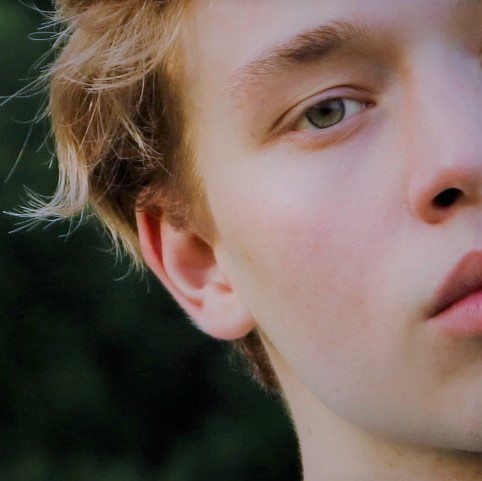
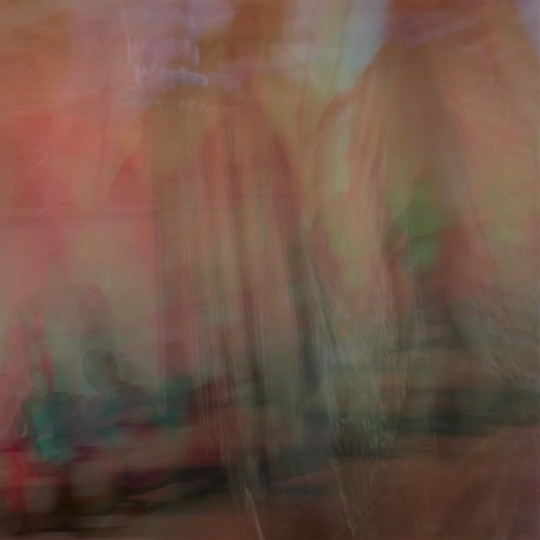

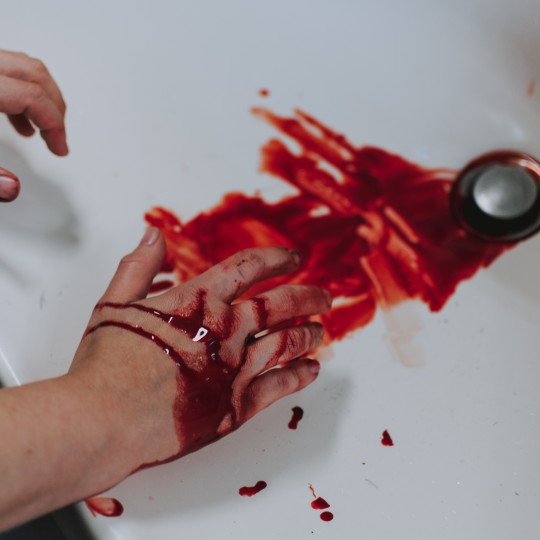
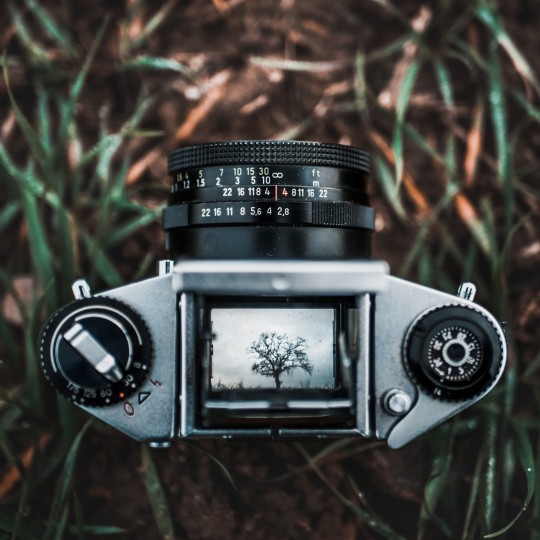
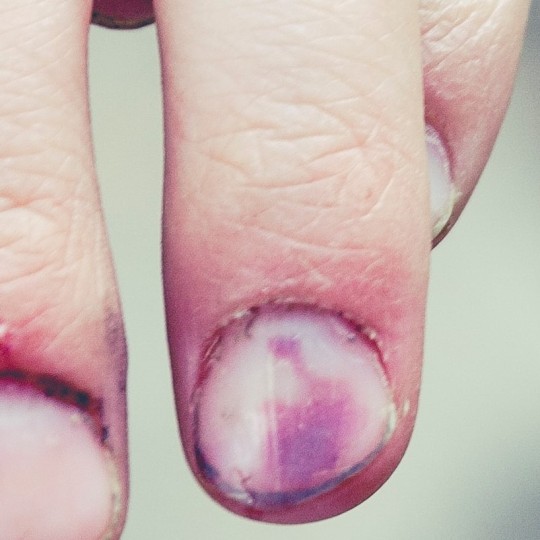
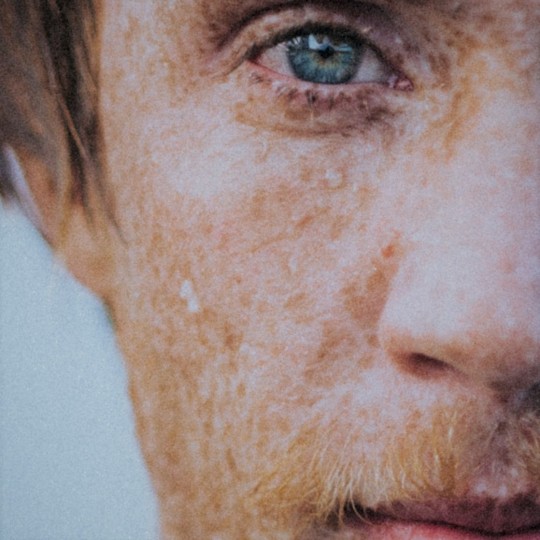
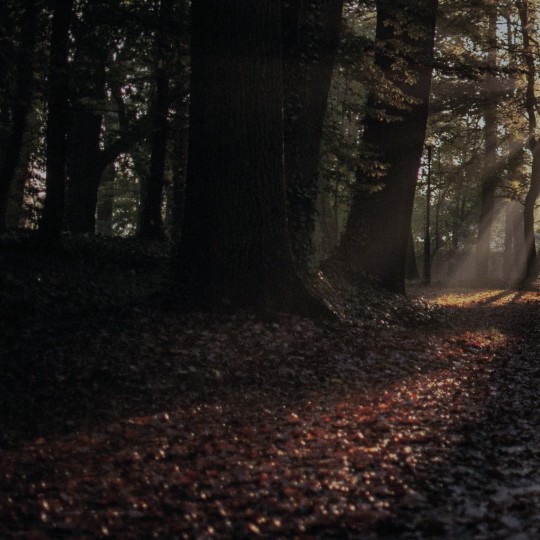

x x x - x x x - x x x
Febuwhump 2022 - Heart of the Sun
Hello everyone! To build up my writing practice I’m going to be participating in Febuwhump and it will also be my public whump writing debut!
Below the cut is a quick overview of the characters who will be the main characters in this Febuwhump and links to each day’s completed prompt will be added also.
PLUS! If you enjoy this story and can guess what song released in the 60s the title is inspired by, you can request another part of the story at the end of February!
The series is set at some unspecified point during the late 60s (and probably not historically accurate at all) in Oxfordshire (and probably not location accurate at all either)
Characters
Jonty

A very ambitious young art photographer from an affluent background
22 years old
he/him
Human
Very dark brown hair and eyes, pale and markless skin
Chris

A young student studying art history at university who became a photography assistant for extra money
20 years old
he/him
Human
Golden blonde hair and dark brown eyes, pale skin that is quick to redden
Kóri

A fairly young (in fae terms) muse of photography
Appears in his mid twenties, but is 53 years old (sort of)
he/him
Fae, sylph
Copper ginger hair and sea blue eyes, pale skin with many freckles
Auðr

A fae that resides in a small lake
Appears around their early twenties but is more than 1,500 years old
they/them
Fae, nøkken
Long black hair and orange eyes, extremely pale skin, almost white
The Story... so Far
General warnings for the whole series: Blood, violence, noncon touching, internalised homo/queerphobia, manipulation, gaslighting, creepy/yandere whumper and the cycle of abuse (times when everything is fine before everything goes to shit again)
Day One: Head Wound Day Two: Failed Rescue Attempt Day Three: Blood Loss Day Four: Nightmares Day Five: ‘Let me see’ Day Six: Hypothermia Day Seven: Used As An Experiment Day Eight: No Anesthesia Day Nine: Natural Disaster (alt used) Day Ten: ‘How long has it been?’ Day Eleven: Blindfolded (alt used) Day Twelve: Spiked Drink Day Thirteen: Won’t Regain Conciousness Day Fourteen: Can’t Go Home Day Fifteen: Hidden Scars Day Sixteen: ‘Does that hurt?’ Day Seventeen: Self-Inflicted Wound Day Eighteen: Forced To Watch Day Nineteen: Delirium Day Twenty: Black Eye (alt used) Day Twenty-One: ‘Help them’ Day Twenty-Two: Restrained Day Twenty-Three: ‘Don’t leave!’ Day Twenty-Four: Too Weak To Move Day Twenty-Five: Muffled Screams Day Twenty-Six: ‘Please don’t do this’ Day Twenty-Seven: Shower Breakdown Day Twenty-Eight: ‘I’ll never forgive you’ (alt used)


A big old thank you to @febuwhump for setting this up and inspiring this weird twisty story out of me which was a joy to write!
#| the eyes |#febuwhump#febuwhump2022#heart of the sun#blood tw#whump community#whump#whump intro#whump fic#| the blood |
10 notes
·
View notes
Text
NEW MUSE : FANDOMLESS .

NAME : auðr . ALIAS : vance, reese thrivefork, stormcatcher . AGE : several thousands . STATUS : active . OCCUPATION : professional menace, shapeshifter .
LOCATION : wandering . WEAPON : axes, magic . MOTIVATION : unknown .
HEIGHT : 168 centimeters , 5′6 WEIGHT : unknown . NOTABLE FEATURES : fanfiction blue eyes 2: electric boogaloo .
BACKGROUND : over the centuries, auðr has long since forgotten what their childhood was like. the earliest they remember is mocking the ancient gods and being punished by having their body taken by the gods. death, who had witnessed a child that had lost everything early on and had simply expressed its rage at the gods who had stolen their life before it even started took pity on the child and made a deal with the gods. they would receive their body back but in return for it they would no longer be able to die. no longer be able to find peace in what they’d craved when they first went after the gods. and ever since, changing names as often as faces the child soon grew into an adult.
over the centuries auðr discovered that with shape shifting powers came an affinity for magic and harnessing those powers over the years has turned them into a powerhouse one should reckon with. and yet despite the sheer power held in bloodied hands, auðr prefers physical fighting. has honed the ability to wield giant axes as though they were butterknives with such precision that no normal human could possibly hope to keep up with. for a long time, they’ve travelled, discovered themselves, discovered humanity. discovered life. death avoided the child and soon enough auðr was left with the question of if there was no longer an identity behind all these faces, who could even claim a name? eventually, a good century later auðr eventually came to the conclusion it didn’t matter. they could simply shift as pleased and no matter what people used to refer to the shapeshifter nothing ever stuck as preferred. and so, all that really stuck as an identifier was a new name “vance” - one that avoided the heritage of auðr and everything that child left behind.
as of recently she has begun to work together with people that tried restoring nature and magic as it used to be - a certain phase in his life left vance questioning of their guilt in a certain amount of extinction cases - and now as of very recently, perhaps four or five years now, they’ve become acquainted with the two johnson cousins who gave her the offer to help with the sanctuary. vance does so sporadically, prefers his isolation and living solitary. only from time to time do they join in on truly helping, uses power to do some good before disappearing like a whirlwind again.
PERSONALITY : torn between cynicism and relaxed positivity vance is an individual that is hard to read. one moment they can be polite and friendly and the next moment there’s a cold, frigid aura around the shapeshifter as if to freeze anyone bold enough to approach. for the most part it simply depends on who is around her; vance doesn’t give his loyalty away easily and yet once it is gained it is fierce, unyielding in the face of anything.
there’s an incredibly amount of confidence that oozes from them; as a child vance taunted the gods and survived, made death itself her accomplice before becoming the shapeshifter and powerhouse he is today. they aren’t easy to startle or surprise mostly because no matter what happens - expected or unexpected - vance knows they can handle it.
that being said it should be noted that vance does love to cause trouble. most of the time it is “smalle”, controllable (for them) things but other times when emotions threaten to overflow she will cause a catastrophe to vent. and in the spur of the moment he might not care too much about casualities, something many a people have learnt the hard way.
#VANCE TBT .#anyways i couldnt decide if traaaaaaaaaaaaaa or not and then i was like#' fuck it. shapeshifter who absolutely does not care about the concept of gender or anyhting related to it '#vance vc: won't have to worry about my pronouns if i knock you out and steal all your money and maybe set your house on fire :)#JLKJDF IDK THEY LITERALLY WENT LIKE THAT IN MY HEAD WHEN I MADE HER LMAO#anyways i already want to elaborate on the stormcatcher thing HHHHHHH
2 notes
·
View notes
Text
fun fact:
Aud/Auðr, Anyanka’s birth name, means 'prosperity, fortune, riches' in old norse and in poetic use can also mean ‘fate, destiny'
4 notes
·
View notes
Text
“…Militarism is closely associated with the social legitimization of hegemonic masculinity —a dominant form of masculinity that many individuals strive toward but only a few attain. While hegemonic masculinity nominally places men in a social position superior to women, it also serves to create socially exclusive hierarchies among men through the marginalization and subordination of both femininity and nonconformist forms of masculinity (Connell 2000, 2005; Connell and Messerschmidt 2005; Hooper 2001). Hegemonic masculinity, by its nature, forces all other men to position themselves in relation to the form of masculinity that is being promoted or honored at any given time.
Traditional traits of hegemonic masculinity might include risk-taking, the enforcement of command structures and disciplinary hierarchies, physicality, aggression, violence, and overt expressions of heterosexuality (Hinojosa 2010). Lower-status men who conform to this status quo can receive benefits from those men who occupy the top of social hierarchies, thereby legitimizing and reinforcing the hegemonic status of the latter (Connell and Messerschmidt 2005). Today, hierarchies of hegemonic masculinity can be easily identified in numerous contexts, such as militaries, militia organizations, and professional sports teams (Bickerton 2015; Connell and Messerschmidt 2005; Higate and Hopton 2005; Hinojosa 2010; Hooper 2001).
There is good evidence for a culture of hegemonic masculinity among Viking Age societies. While perceptions of masculinity were undoubtedly imbued with their own shades of nuance across space and time, cultural similarities in the material record speak to broadly homogenous attitudes toward masculinity and its associations with militarism (Hadley 2016:262). Political power lay in the hands of war leaders and their retainers, who were most able to exploit and perpetuate hierarchies of masculinity to reinforce their influence. Expressions of masculinity may also have been closely associated with religious ideologies that reflected the sacral power and status of the elite. It has been suggested, for example, that the mediating role that Germanic kings held between the gods and populations before the Christianization process was expressed sexually through demonstrations of masculinity and virility (Clunies Ross 1985).
…When considered within a wider context, the perpetuation of hegemonic models of masculinity may have legitimized and fueled expressions of power and competitive behavior (Connell 2000), with significant implications for sociopolitical hierarchies and perceptions of gendered power. There has been some debate as to how gender was conceptualized and expressed among Scandinavian societies (Back Danielsson 2007; Clover 1993; Norrman 2000). Carol Clover (1993) has argued that Viking Age societies possessed a “one sex” perspective of gender that, instead of polarizing femininity and masculinity, equated masculinity with power. As a result, expressions of masculinity were celebrated and emphasized. Clover’s hypothesis is borne out in saga narratives that contrast the Old Norse term hvatr (vigorous or manly), used most often in reference to men, with the term blauðr (weak or cowardly), which often refers to women.
This implies that an individual’s status could have been positively or negatively influenced by words or actions considered hvatr or blauðr (see Clover 1993 and discussion below). This portrayal of gendered power aligns well with the concept of hegemonic masculinity because the competitive nature of masculine hierarchies would have encouraged individuals to constantly seek to enhance their status by discrediting others. The intense rivalries that could emerge as a result can be seen in the culture of insult, hypermasculinity, and feuding that abounded among Scandinavian societies. Eddic poems and the sagas are replete with examples of male antagonists exchanging insults (Old Norse flyting), which usually involved boasts of masculinity and the humiliation of one’s opponent, as in Örvar-Odds saga, Hárbarðsljóð, and Helgakviða Hundingsbana I (Orchard 2011; Pálsson and Edwards 1985). Some insults, such as nið, which was associated with accusations of breaking taboos, cowardice, and/or sexual deviance, were so powerful that their use was mitigated by law (Almqvist 1965, 1974; Clover 1993; Meulengracht Sørensen 1980).
The influence of hegemonic masculinity is further illustrated when we consider gendered norms among Scandinavian societies. The roles of men and women were nominally well defined by legal codes and social conventions (Jochens 1995), and acting in a way deemed inappropriate to one’s sex resulted in significant social disapproval (although in certain cases this may have imbued some individuals with a strange type of power; see Price [2002] on men who practiced sorcery). In a society that promoted hegemonic cultures of masculinity, it should not be surprising to find evidence for the nominal regulation of gender roles or the subordination of both women and marginalized men who failed to live up to masculine ideals (Connell 2005). For men, acting in a way that was considered blauðr brought shame and disgrace. In Kormáks saga (chap. 13; Hollander 1949), for example, Bersi’s wife is able to legitimately divorce him after he receives a wound to the buttocks during combat. Other incidents in the sagas indicate that the charge of “unmanliness” and the threat of divorce were frequently used by women to incite men to undertake acts of violence (Anderson and Swenson 2002; Clover 1993; Jochens 1995).
In Grænlendinga saga (chap. 7), Freydís threatens her husband with divorce if he does not avenge a fictitious assault against her (Kunz 2000a), while in Laxdæla saga (chap. 53), Þorgerðr tells her sons that they would have been better born as daughters in order to shame them into avenging the killing of their brother (Kunz 2000b). The fear of judgment for failing to act in an appropriately masculine manner can even be seen among Guðrún’s adolescent sons in Laxdæla saga (chap. 60; Kunz 2000b). Having been shamed by their mother for indulging too long in children’s pursuits, the youths acknowledge that they are at an age where they will be judged if they were to fail to avenge their father’s death. This suggests that children and adolescents were aware of the need to cultivate and preserve one’s status within hegemonic hierarchies of masculinity from an early age.
For women, acting outside of nominal gendered roles also carried social and legal repercussions. The Icelandic Grágás laws, for example, prescribed that a woman who wore a man’s clothes, cut her hair short, or carried weapons should be sentenced to outlawry (Dennis, Foote, and Perkins 2000:219). Hegemonic hierarchies, however, are not static or monolithic (Connell 2005), and the perpetuation of a “one sex” model of gendered power might have cultivated a peculiar form of social fluidity that allowed some individuals to traverse gender boundaries (Back Danielsson 2007; Clover 1993; Norrman 2000). Just as it was possible for men to increase or lose their status through their words and actions, so too might some women have attempted to achieve social ascendancy by behaving in a way considered hvatr.
The sagas indicate that some women who openly defied social conventions by wearing men’s clothing and carrying weapons, such as “Breeches Auðr” in Laxdæla saga (Kunz 2000b), were not only tolerated but also admired (Bagerius 2001). Other textual sources indicate that women participated in warfare as combatants, and in one case a woman is noted as commanding a viking fleet in Ireland (Bekker 1838–1839; Todd 1867). While such women might well have been a minority within Scandinavian society, these depictions are now potentially supported by a recent study of the human remains from grave 581 at Birka, Sweden. This burial, containing an individual accompanied by a sword, an axe, two spears, archery equipment, a knife, two shields, and two sacrificed horses, was long considered to be an archetypal burial of a male viking warrior. Recently, however, genomic analysis by Hedenstierna-Jonson et al. (2017a) has found that the individual interred within the grave was in fact female.
Until now, the only archaeological evidence for armed women was a corpus of so-called Valkyrie brooches and pendants, known from across the viking world, and these findings therefore provide new impetus for the targeted reanalysis of other purported burials of women accompanied by weapons (see Gardeła 2013b; Pedersen 2014). These include two individuals, both of whom have been osteologically sexed as females, who were buried with weapons and other martial equipment in Hedmark and Nord-Trøndelag, Norway (Hedenstierna-Jonson et al. 2017b). While these burials must be interpreted cautiously, the obvious corollary of these findings is that some women were active participants in the martial cultures of the Viking Age. At present, we can only speculate as to whether these individuals were perceived as “women” or as “men” or whether they perhaps occupied (either permanently or temporarily) some kind of third gender (see Back Danielsson 2007; Norrman 2000), but they nonetheless indicate that gendered boundaries were permeable. While we should not suppose that participation in martial society ubiquitously demanded active involvement in combat, these burials remind us that at least some girls may have been conditioned to adopt the persona or roles of the warrior.”
- Ben Raffield, “Playing Vikings: Militarism, Hegemonic Masculinities, and Childhood Enculturation in Viking Age Scandinavia.”
8 notes
·
View notes
Text
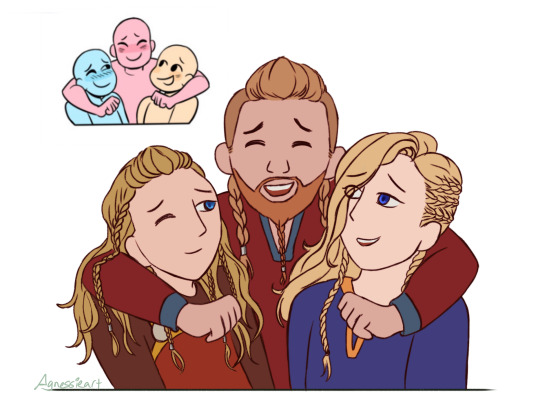
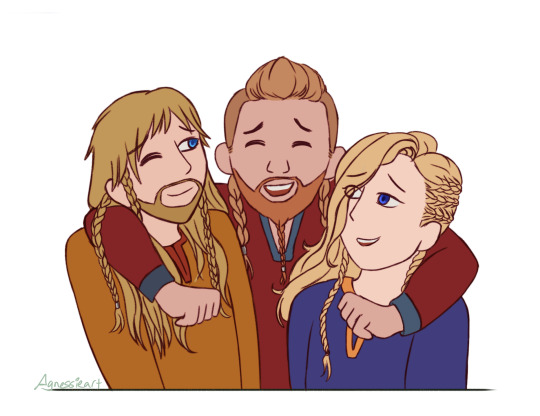

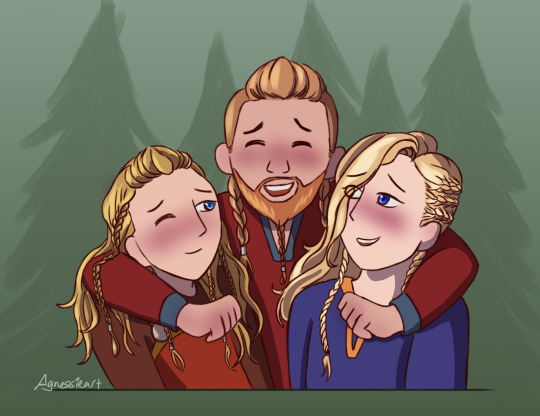
A3 with the viking trio!
I did one with (Sve), Agnarr (Dan), and Sigurdr /Auðr (Nor)
Also one with Brynhildr (fem Sve), which is based on a lil story thingy I did with @willeke-burggraaf where, STORY TIME,
Ag fell in love with Sig who was posing as a woman (Sigridr) cause he/they was practicing seidr. Bryn was very much in love with Ag and when Ag found out Sig was a guy, he ended up marrying Bryn, but kept Sig as his side fling. Also Sig got name changed to the unisex name Auðr after coming out to the rest of the village (which yes, is the Auðr of my dtiys lol)
And after doing so Auðr became one of the most powerful magic users. Odin told them he'd be once they were completely comfortable with themselves. That was when he spoke to Odin about please changing his body to female so they could just marry Ag and he wouldn't have to find out the truth...
meanwhile Auðr was also very much in love with Ag's slave Áed (Scot) so it was a big mess
So yea ... I very much wanted to draw them three, then as an afterthought made a male Sve version (who's hair was hell btw) So also thanks @hetaliahistorynerd for requesting DenSuNor. I dunno if this is neccesarily what you were after, but ... I couldn't resist😅
Also fun fact, in a legend there was a Brynhildr who was rescued by a Sigurdr (who was pretending to be Gunnar, her husband). When she found out she accused Sig of taking her virginity, at which the real Gunnar murdered Sig. Which kinda portrays the relationship between Bryn and Sig at the beginning, so that was cool
#aph sweden#aph norway#aph denmark#viking trio#hetalia#aph vikings#hws norway#hws sweden#hws denmark#illustration#artists on tumblr#art on tumblr#digital art#digital#art#drawing#vikings#character design#trio#masc norway#nb norway#masc denmark#fem sweden#masc sweden#dennor#densu
47 notes
·
View notes
Text
Duchess Mathilda this, Daurama Daura that. Where’s the love for Chieftess Auðr
#she’s my favourite start. not for any good reason. I just like her#It’s fun to consolidate Iceland & then just absolutely ransack Ireland#I happened to get an event to convert to Adamantism & now I’ve just turned Iceland into this godawful incestual island. it’s interesting to#say the least#Crusader Kings 3#incest mention
2 notes
·
View notes
